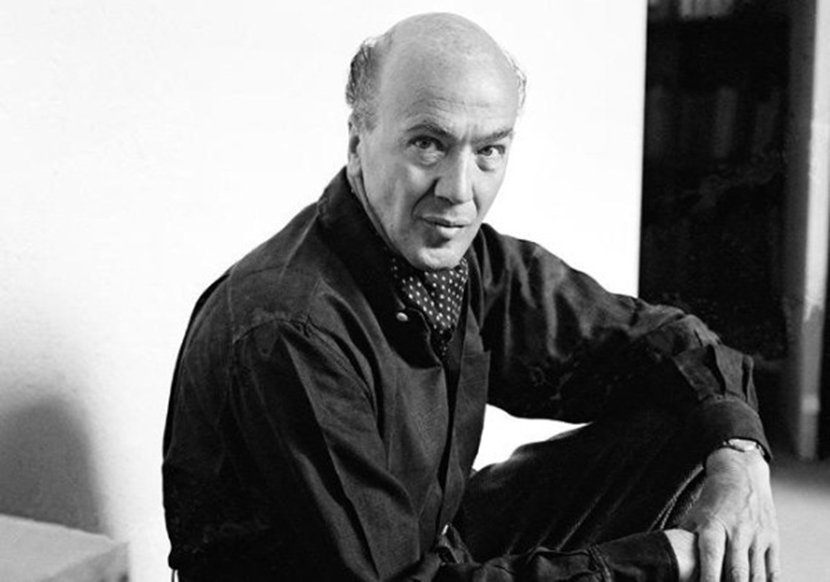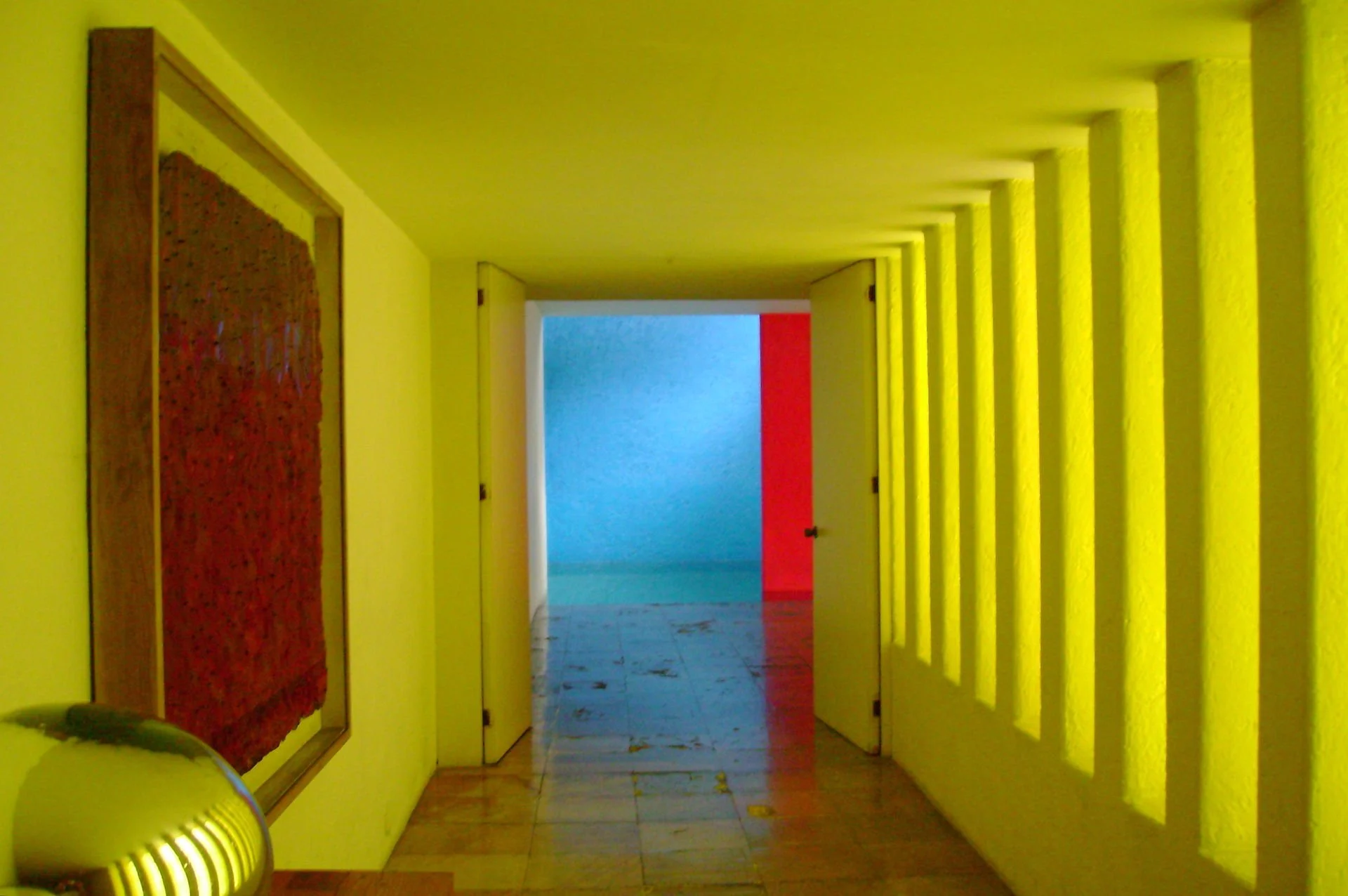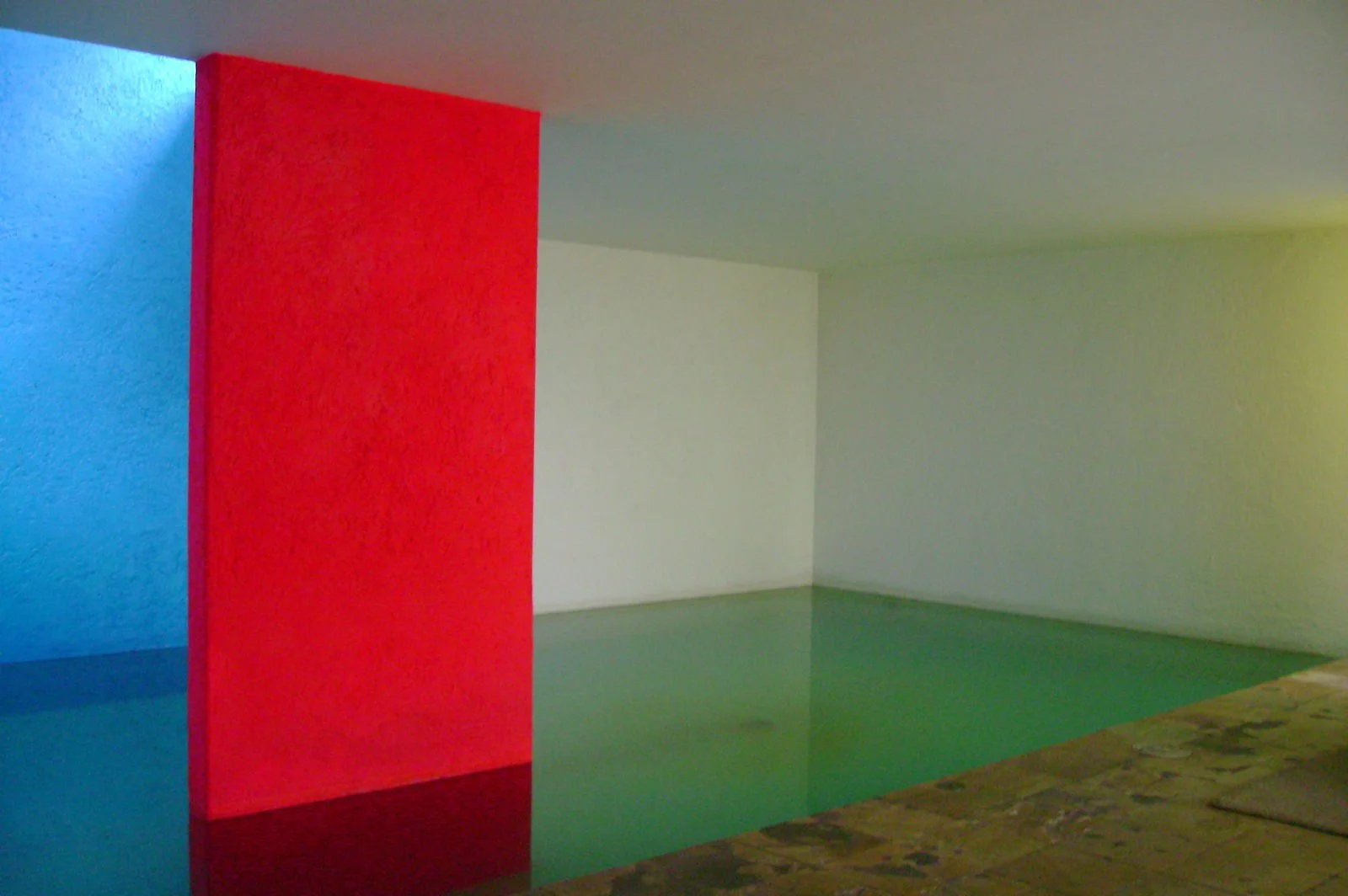In Reflection: A Late Morning at Casa Luis Barragán
“My house is my refuge, an emotional piece of architecture, not a cold piece of convenience,” Barragán once said of his dwelling, where he also lived for forty years. Indeed, in stark contrast to the street view, when you walk inside his home, built in 1948, everything changes. Here, you’ll discover light, form, lines and colors. You’ll also find that the place has been largely untouched since Barragán’s death in 1988 (if you want proof, the architect’s Cadillac is still parked in the garage).
Entering the tiny, dim vestibule, you notice only a sliver of rectangular light coming in a window. A door opens. You’ve now arrived in a larger, light-filled room with a central staircase, where a bright pink wall meets a black stone floor, and above, a large gold-leaf painting on the landing. To the right, Barragán’s phone, desk and chair are still positioned. Welcome to simplicity. Keep walking.
Part of the Barragán formula features small, low ceiling rooms leading to more grand two story-spaces. Upstairs, an airy living room features simple wooden furniture designed by Barragán and designer Clara Porset, along with thrift shop and antique market finds. The light is warm and amber. On the walls are works by artists Amedeo Modigliani and Josef Albers (who was also fond of bold color). There’s also a comprehensive library, a mash-up of books ranging from landscape design to anthropology to contemporary art. On the tables are neatly organized objects: sculptures, jars and large mirrored balls. A turntable sits near a comfortable mauve armchair, and for a minute, you can almost see Barragán’s ghost turning up the dial.
A large picture window frames an outside garden where sweet jasmine and narcissus are planted alongside native trees and vines. This, you will note, is the only green color in the space. As Barragán was fond of saying, he wanted to “make a house, and from a house a garden.”
You can’t miss Barragán’s signature floating wooden staircases to the bedrooms. Although nobody’s allowed to climb these delicate works of art, you’ll still feel a weightless, playful nature against the home’s solid concrete walls. Barragán also loved riding horses and kept figurines of them in almost every room. From Barragán’s devout Catholic upbringing, you’ll find plenty of religious iconography – saints, angels and skulls. The architect’s dressing room also features a large crucifix on the wall and a guest room has a picture of the Madonna and Child. Sparsity was also important. Barragán credits Mexican monasteries as an influence: “I have always been deeply moved by the peace and sense of well-being I found in those uninhabited cloisters.”
With a nod to the Bauhaus movement, Barragán focused on creating a personal connection to minimalist spaces, primarily through geometry and bright colors. Make your way to the rooftop, where a panel of high walls (just look at that red!) block out the street, allowing visitors to focus on the blue sky and dominant natural light. It’s a frame within a frame —a place of quiet reflection and calm. Like Barragan might have intended: we gladly shift our gaze and look up.






